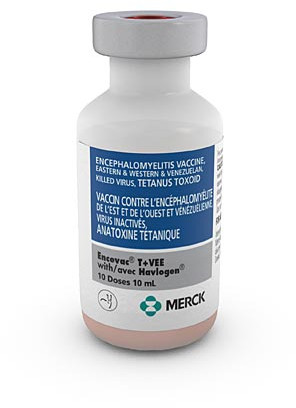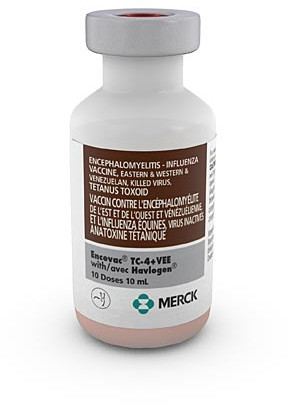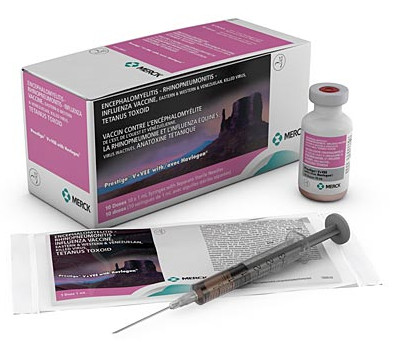Venezuelan Encephalomyelitis
Disease Overview
This is a mosquito-borne viral disease that affects South, Central and North America.
Merck Animal Health Solutions
For Venezuelan Encephalomyelitis
For vaccination of healthy horses 6 months of age or older, as an aid in the prevention of disease caused by Eastern, Western and Venezuelan encephalomyelitis viruses and tetanus.
For vaccination of healthy horses 6 months of age or older, as an aid in the prevention of disease caused by Eastern, Western and Venezuelan encephalomyelitis viruses and tetanus and as an aid in the control of respiratory disease and as an aid in the reduction of virus shedding caused by Equine Influenza Virus (EIV). Duration of immunity (DOI) has been shown to be at least six months for EIV.
For vaccination of healthy horses 6 months of age or older, as an aid in the prevention of disease caused by Eastern, Western and Venezuelan encephalomyelitis viruses and tetanus, as an aid in the control of respiratory disease caused by EIV, EHV-1 and EHV-4 and as an aid in reduction of virus shedding of EIV and EHV-1. Duration of immunity (DOI) has been shown to be at least six months for EIV.
Clinical Signs
It is impossible to differentiate among EEE, WEE and VEE solely by clinical signs. Early clinical signs of encephalitis include marked depression and high fever. The disease may result in prostration and death usually within 1-5 days. Other signs of acute disease are impaired vision, uncoordination, inappetence, circling, restless excitement, dyspnea and frequently paralysis. With EEE and WEE usually only one horse in a herd is affected; in VEE the morbidity rate in herds may be 50% or more because it can be spread directly from horse to horse.




